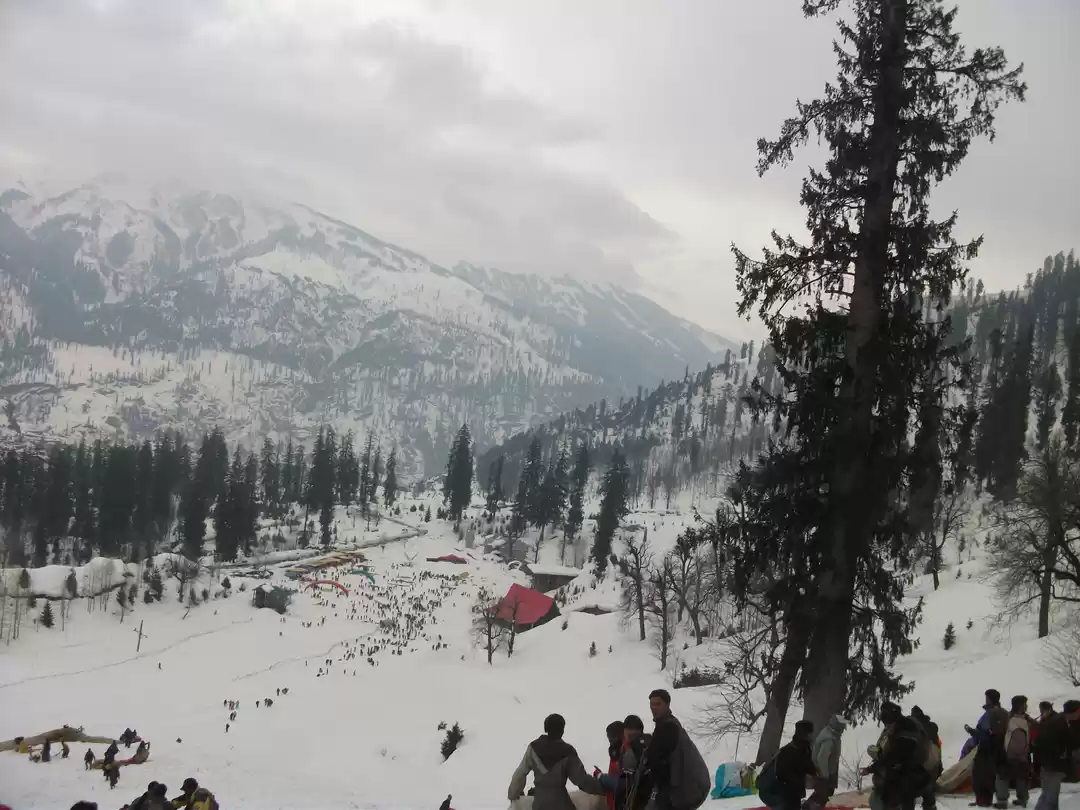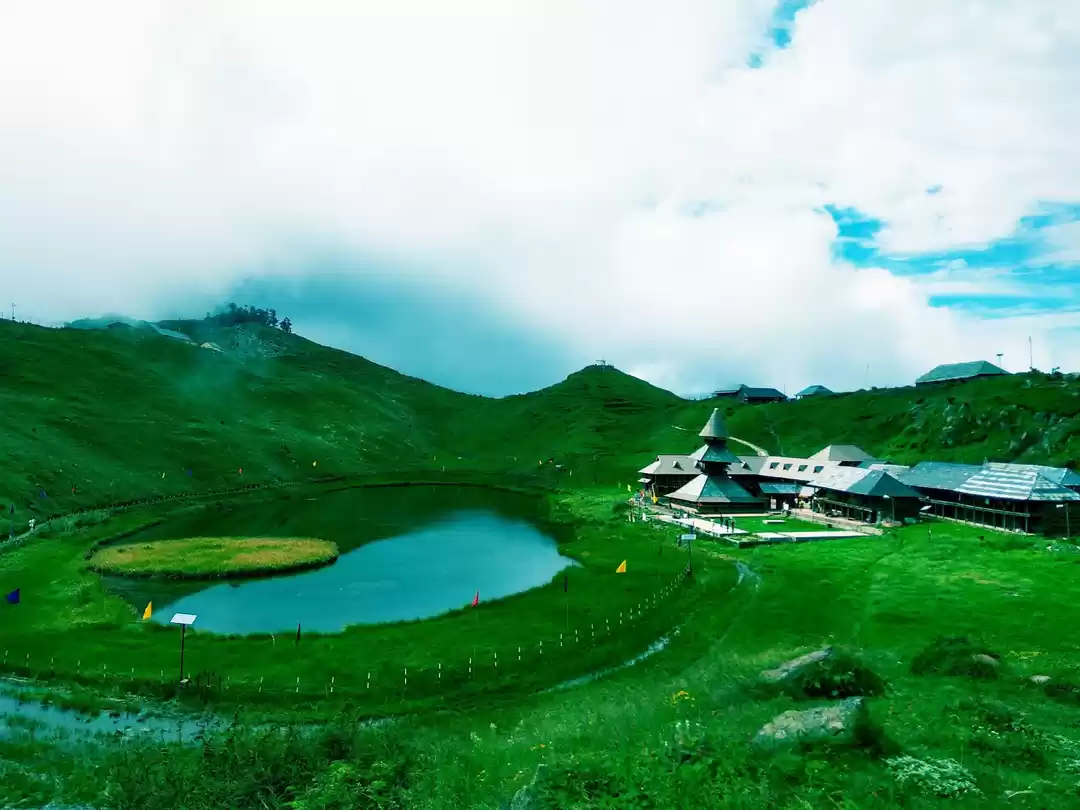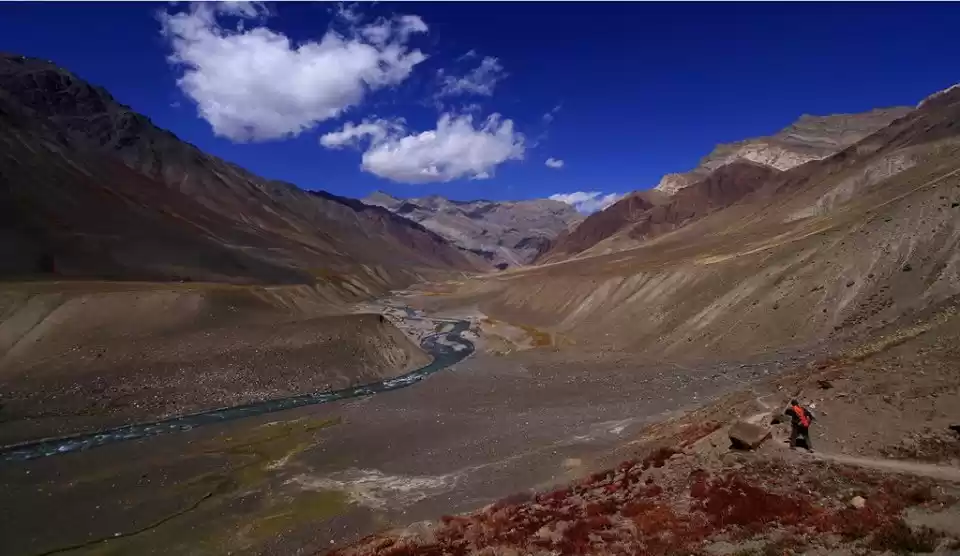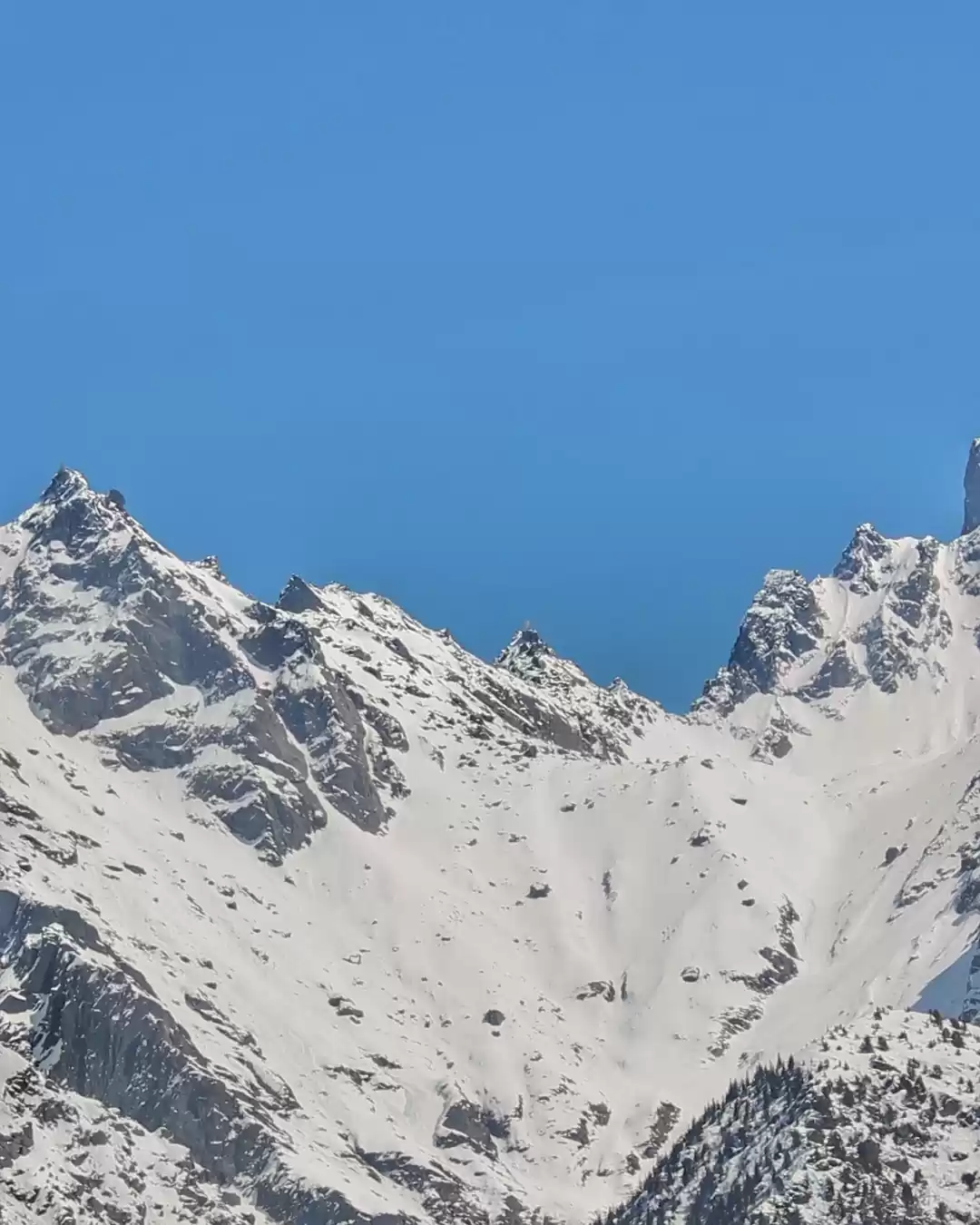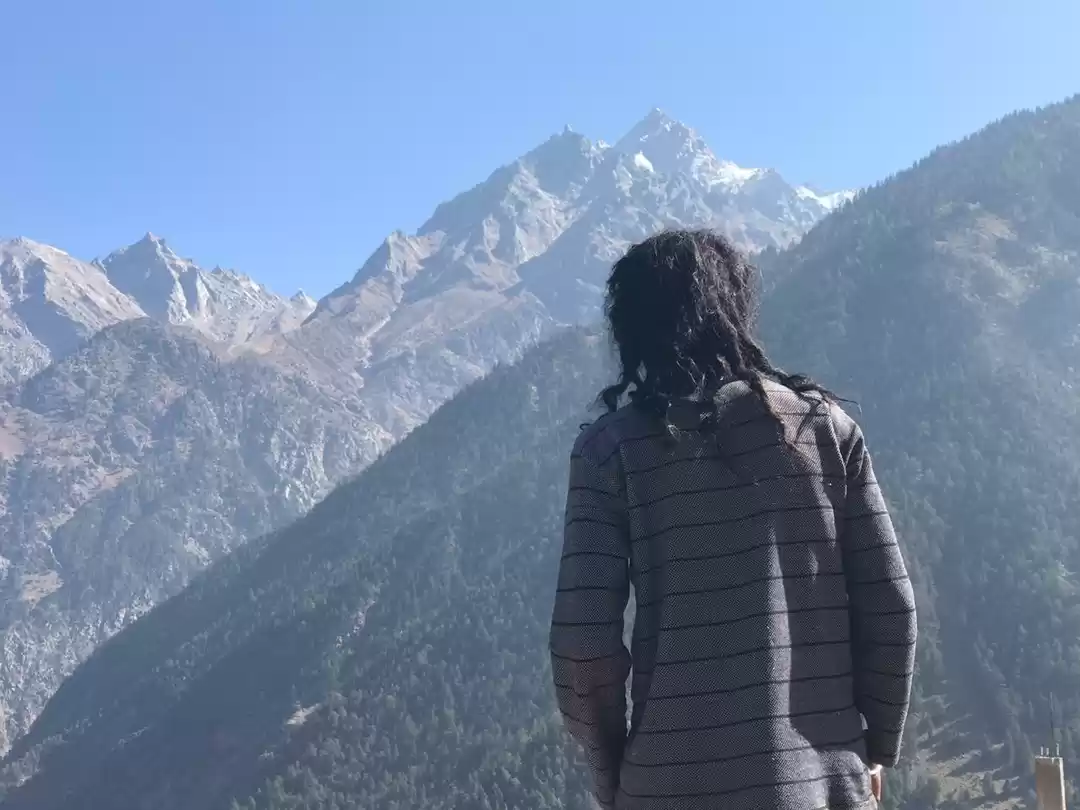Have you ever dreamed of visiting a place where heaven meets earth, where nature reveals its splendor, and where spirituality awakens your soul? If yes, then you should definitely plan a trip to Kinner Kailash, a majestic mountain peak in the Himalayas that is revered by Hindus and Buddhists as the abode of Lord Shiva and Goddess Parvati.
In this article, we will tell you everything you need to know about Kinner Kailash, its history and mythology, its yatra and trek, and how to plan your trip to this sacred and beautiful destination.
Kinner Kailash: The History and Mythology
Kinner Kailash is derived from the name of Kinnaur, the region where it is located in Himachal Pradesh, India, and Kailash, the Sanskrit word for crystal or jewel. It is one of the five Kailash mountains that represent the five elements of nature (earth, water, fire, air, and space) according to Hindu and Buddhist cosmology. The other four are Mount Kailash in Tibet (space), Manimahesh Kailash in Himachal Pradesh (air), Adi Kailash in Uttarakhand (fire), and Shrikhand Mahadev in Himachal Pradesh (water).
Kinner Kailash is considered as the winter home of Lord Shiva, the supreme god of Hinduism, and his consort Goddess Parvati, the mother goddess. According to legend, Lord Shiva and Goddess Parvati met at Kinner Kailash for the first time and fell in love. They created Parvati Kund, a sacred lake near the peak that is believed to have healing powers. It is said that Lord Shiva organizes a meeting of gods and goddesses at Kinner Kailash every winter, and during this time, the Kinner Kailash Shivling, a natural rock formation that resembles a Shiva lingam (a symbol of Lord Shiva’s energy and power), changes colors throughout the day.
Kinner Kailash is also a sacred place for Buddhists, who believe that it is one of the 24 places where Padmasambhava, the founder of Tibetan Buddhism, meditated and attained enlightenment. Padmasambhava is also known as Guru Rinpoche or the Second Buddha. He is credited with spreading Buddhism in Tibet and other parts of Asia. He is said to have left his footprints on a rock near Parvati Kund.
Kinner Kailash Yatra: The Pilgrimage to the Divine Abode
The Kinner Kailash Yatra is a pilgrimage or a spiritual journey to the Kinner Kailash Shivling. It is one of the most challenging and rewarding pilgrimages in India, as it involves trekking from Tangling village to Parvati Kund, crossing a glacier, and reaching the Shivling at an altitude of 4800 m. The yatra starts every year in the month of Savan (July-August), which is considered as the most auspicious month for worshipping Lord Shiva. The yatra takes about 2-3 days to complete.

The yatra begins with a ritual bath in the Sutlej river at Tangling village. Then, the pilgrims trek for about 10 km to reach Ashiqui Park, where they camp for the night. The next day, they trek for another 10 km to reach Parvati Kund, where they take another ritual bath in the holy lake. From there, they trek for about 2 km to reach the Shivling. They perform prayers and offerings at the Shivling and witness its miraculous color changes. Then, they return to Parvati Kund and camp for another night. The next day, they trek back to Tangling village and complete their yatra.
The yatra is not only a test of physical endurance but also a test of mental faith. The pilgrims have to face harsh weather conditions such as cold winds, snowfall, rain, and fog. They also have to deal with altitude sickness, fatigue, dehydration, and injuries. However, they also experience spiritual bliss and enlightenment as they feel closer to Lord Shiva and Goddess Parvati. They also enjoy the scenic beauty of Kinnaur valley, which is full of green meadows, apple orchards, pine forests, and snow-capped mountains.
Also check out: Kinner Kailash Parikrama Trek
Kinner Kailash Trek: The Adventure of a Lifetime
The Kinner Kailash Trek is an adventure or an exploration of the Kinnaur region that surrounds the Kinner Kailash peak. It is one of the most thrilling and exciting treks in India, as it involves starting from Kalpa village, passing through Charang village, crossing Charang La pass at 5300 m, circumambulating (parikrama) the Kinner Kailash peak, and returning to Kalpa. The trek is also known as the Kinner Kailash Parikrama or the Kinnaur Kailash Circuit Trek. The trek takes about 7-10 days to complete.

The trek begins with a drive from Kalpa village to Thangi village. Then, the trekkers trek for about 12 km to reach Lambar, where they camp for the night. The next day, they trek for another 14 km to reach Charang, where they visit the ancient Rangrik Monastery and the Charang Castle. The next day, they trek for about 8 km to reach Lalanti, where they camp near a glacial stream. The next day, they trek for about 10 km to reach Chitkul Pass, where they get a panoramic view of the Himalayan peaks.
The next day, they trek for about 12 km to reach Kunsha, where they camp near a meadow. The next day, they trek for about 14 km to reach Charang La pass, the highest point of the trek at 5300 m. From there, they descend for about 8 km to reach Chitkul village, where they complete their parikrama of the Kinner Kailash peak. The next day, they drive back to Kalpa and complete their trek.
The trek is not only a challenge of adventure but also a challenge of exploration. The trekkers have to face steep ascents and descents, narrow trails, rocky terrains, and glacial crossings. They also have to cope with changing weather conditions, low oxygen levels, and unpredictable wildlife. However, they also experience the thrill and excitement of discovering new places, cultures, and landscapes. They also witness the scenic beauty and cultural diversity of Kinnaur region, which is influenced by Tibetan Buddhism and has many ancient monasteries, temples, and villages.
You may also like to check out: Kalpa, the 'view point' of Kinner Kailash
How to Plan Your Trip to Kinner Kailash
If you are interested in visiting Kinner Kailash, here are some practical information and tips for planning your trip:
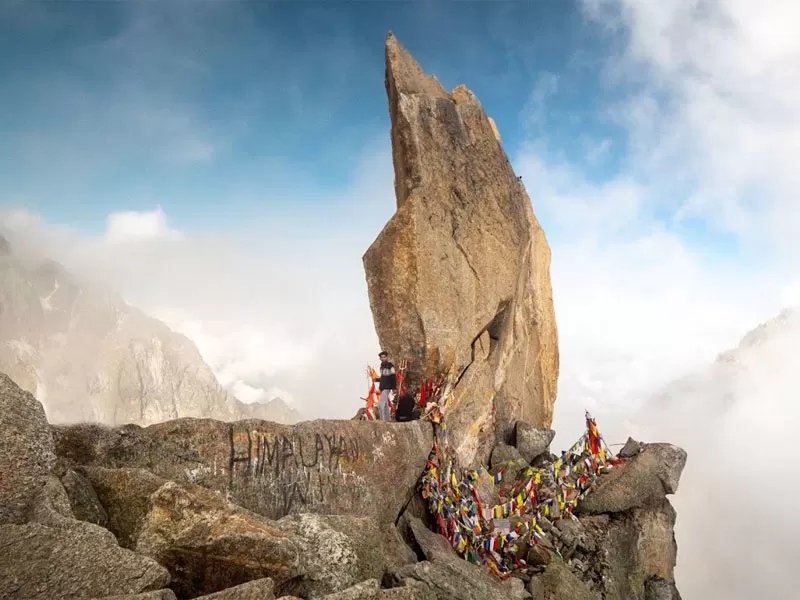
How to reach Kinnaur:
You can reach Kinnaur from different parts of India by road, rail, or air. The nearest railway station is Shimla (250 km), which is connected to Delhi and other major cities by trains. The nearest airport is Chandigarh (350 km), which is connected to Delhi and other major cities by flights. From Shimla or Chandigarh, you can take a bus or a taxi to reach Kinnaur via NH-22. The road journey takes about 8-10 hours.
What permits are required:
You need an Inner Line Permit (ILP) for visiting Kinnaur and doing the yatra or trek. You can get an ILP online from [this website] or offline from the District Magistrate Office in Reckong Peo (the headquarters of Kinnaur district). You need to submit your identity proof, passport size photo, and itinerary details along with a nominal fee. The ILP is valid for 15 days and can be extended if required.
What equipment and clothing are needed:
You need proper equipment and clothing for doing the yatra or trek. You need a backpack, a sleeping bag, a tent, a mat, a stove, utensils, food items, water bottles, a torch, a first aid kit, a map, a compass, and a camera. You also need warm clothes such as jackets, sweaters, gloves, caps, socks, and boots. You also need raincoats or ponchos in case of rain or snowfall.
What are the safety precautions and medical facilities:
You need to take some safety precautions and medical facilities for doing the yatra or trek. You need to acclimatize yourself to the high altitude by taking rest and drinking plenty of water. You need to avoid alcohol and smoking as they can worsen your health condition. You need to follow the instructions of your guide or leader and stay with your group at all times. You need to inform your family or friends about your whereabouts and contact details.
You need to carry some medicines for common ailments such as headache, nausea, diarrhea, fever, etc. You also need to carry some emergency medicines such as diamox (for altitude sickness), painkillers (for injuries), antibiotics (for infections), etc. You can find some basic medical facilities at Tangling village (for yatra) and Charang village (for trek). However, in case of any serious illness or injury, you may have to be evacuated by helicopter or ambulance to the nearest hospital.
What are some other places to visit or things to do in Kinnaur:
Besides doing the yatra or trek, you can also visit some other places or things to do in Kinnaur, such as:
Explore the charming villages of Kinnaur, such as Kalpa, Sangla, Chitkul, Nako, and Tabo, where you can experience the traditional lifestyle, architecture, and cuisine of the Kinnauri people.
Visit the ancient monasteries and temples of Kinnaur, such as the Rangrik Monastery, the Charang Monastery, the Nako Monastery, the Tabo Monastery, and the Chandika Devi Temple, where you can witness the rich cultural and religious heritage of Kinnaur.
Enjoy the scenic beauty and adventure activities in Kinnaur, such as hiking, camping, fishing, rafting, skiing, and paragliding, where you can admire the stunning views of the Sutlej river, the Baspa valley, the Sangla valley, and the Spiti valley.
Shop for some local handicrafts and souvenirs of Kinnaur, such as woolen shawls, caps, socks, carpets, silver jewelry, wooden carvings, dried fruits, and apple cider vinegar, where you can support the local artisans and farmers.
Kinner Kailash is a unique and memorable destination for anyone who loves nature, culture, or spirituality. It offers a rare opportunity to witness the divine abode of Lord Shiva and Goddess Parvati in the Himalayas. It also offers a chance to experience the beauty and diversity of Kinnaur region.
Whether you choose to do the yatra or trek or both, you will surely have a journey of a lifetime. So, what are you waiting for? Book your trip to Kinner Kailash today and get ready for an unforgettable adventure.





